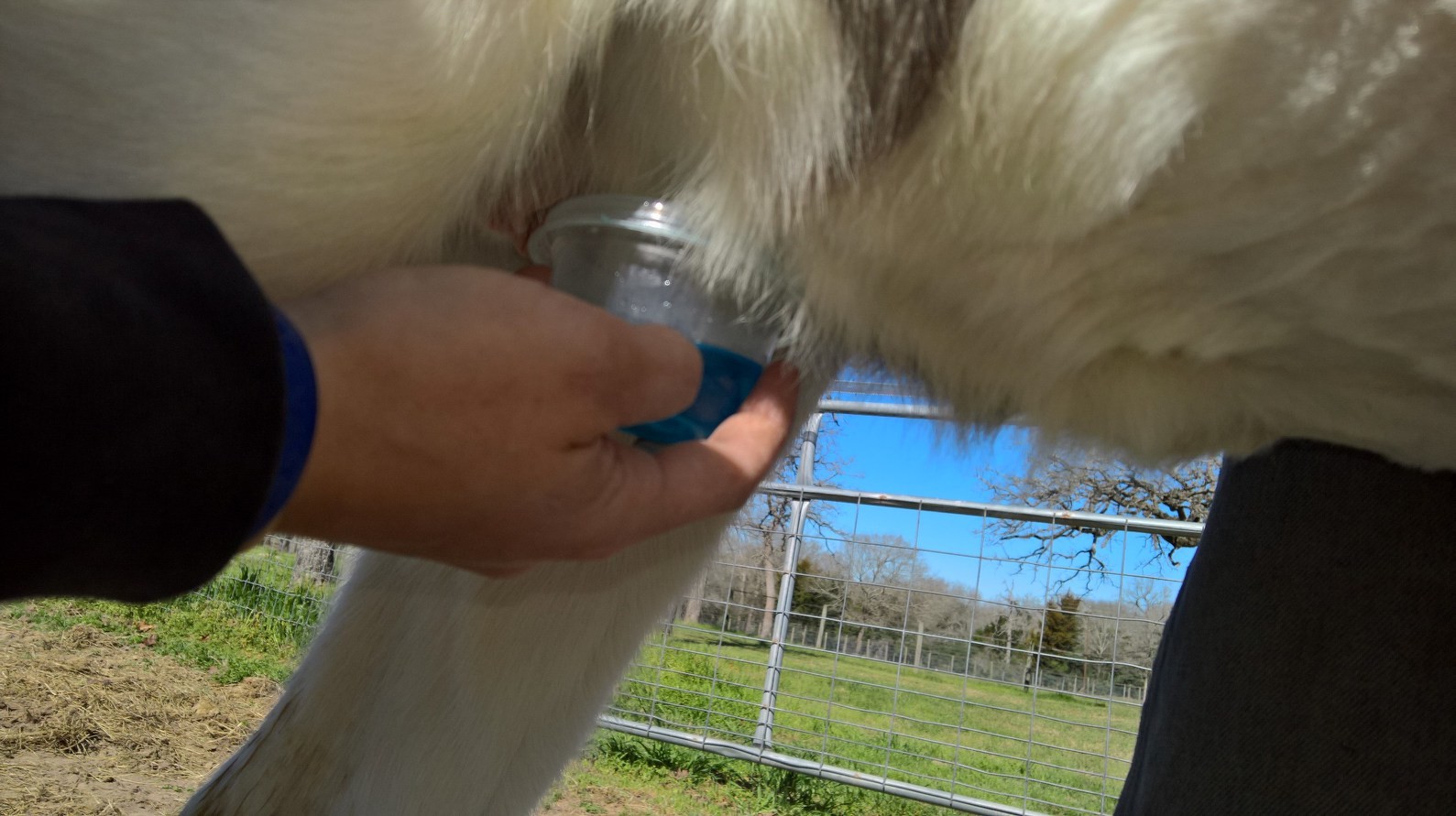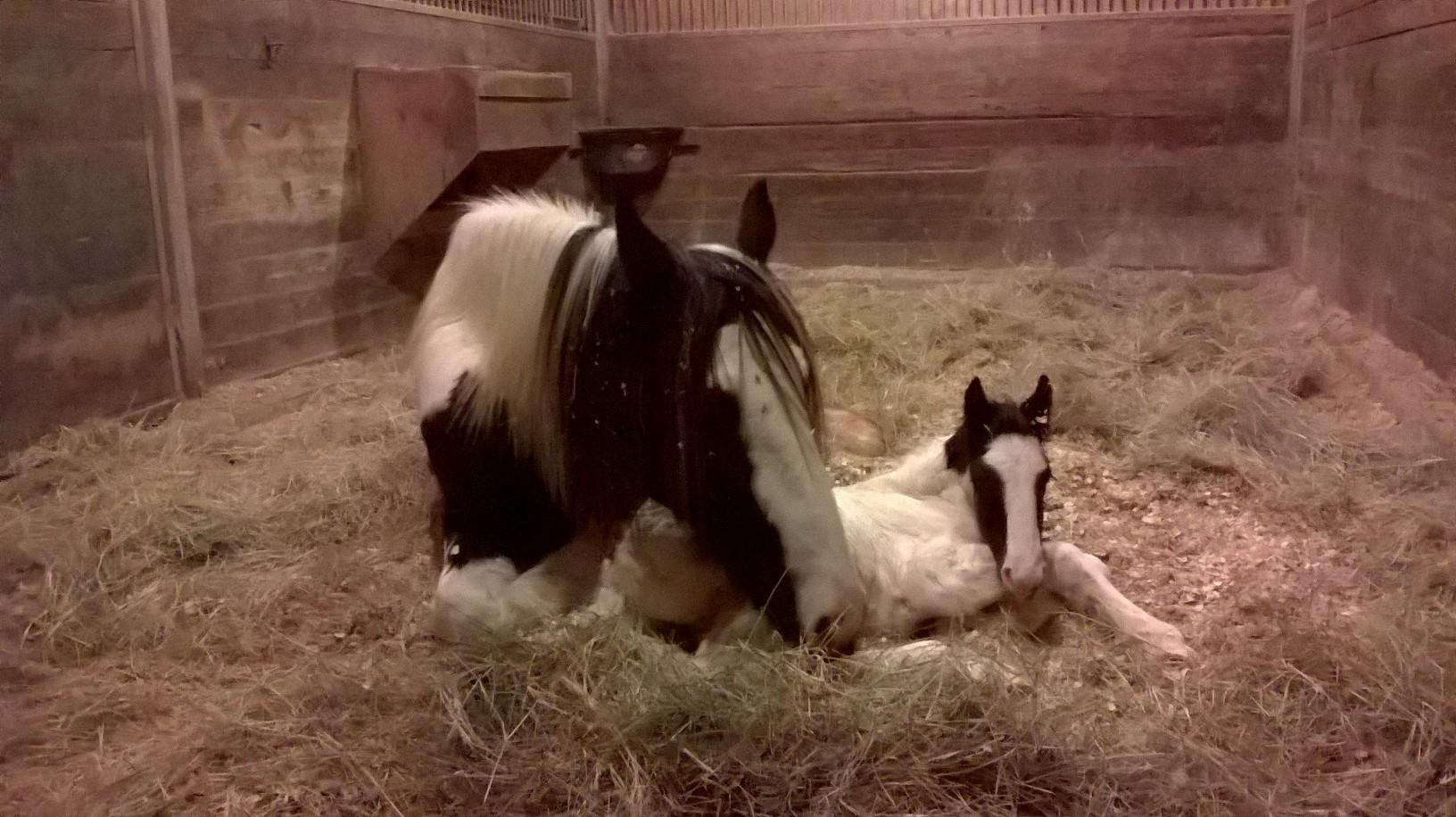Newborn Foal Care
Written by Kelsey Kempton
Published February 2016
The day has finally arrived! It’s 2am after 11 long months and your mare has decided to foal at last. The birth goes well and you have your new bundle of joy, but what now? How do you care for your new addition to give them the best chance of a healthy start to life? There are several crucial things you should do within the first 24 hours of your foal’s life to ensure a healthy, happy baby. The most important piece of equipment you can have in your foaling kit is a watch. Accurately recording when your foal stands, nurses, and passes meconium will be your first indication of the health of the foal. A good rule to follow is the 1-2-3 rule. The foal should be standing in 1 hour, nursing in 2 hours, and pass meconium in 3 hours. The mare should also pass the placenta by the 3 hour mark. This is a general guideline, some foals, especially the large drafts, take a bit longer to stand and nurse since they are born so big! So don’t panic if your foal isn’t standing by exactly an hour, as long as they are actively trying and making progress, everything is normal. While you are diligently keeping an eye on the clock, and ecstatically watching your foal take his first few breaths, you should direct your attention to the umbilical cord. The umbilicus is the foal’s lifeline in utero. It contains two umbilical arteries, one umbilical vein, and the urachus, which is an extension of the urinary bladder that allows the fetus to void urine in utero. The umbilical cord will likely break on its own during or shortly after birth from either the foal’s movement or the mare getting up. If the cord doesn’t break it is not recommended that you cut it, but instead firmly grasp the cord on either side of the intended break site (about 1 inch from the foal’s abdomen) then twist and pull to break the cord. Twisting and pulling the cord stimulates the closure of the umbilical vessels and reduces the likelihood of hemorrhage. If bleeding from the umbilical stump persists, applying pressure with a thumb and a forefinger for several minutes will usually stop the bleeding. Once the cord is broken, the umbilical stump should be dipped in an antiseptic solution 2-3 times a day for the first 2-3 days. This is crucial to the health of the foal because the umbilical stump is an open entry point for bacteria and pathogens directly into the bloodstream which can lead to septicemia, joint infections, and even death. The two commonly used antiseptic solutions are 2% Chlorhexidine or 1% Povidone Iodine. There is veterinary recommendation for both solutions, but Chlorhexidine is quickly gaining more support as recent research shows that iodine solutions can actually kill some umbilical tissue and lead to delayed healing and an increase in potential umbilical infection. More concentrated solutions should never be used as they can cause irritation to the skin surrounding the umbilical. It should be noted that dipping the umbilical stump is meant to prevent infection and promote healing, and while it does decrease the likelihood of other umbilical problems such as patent urachus or umbilical hernias, it does not prevent them. Now that you have adequately cared for your foal’s umbilical stump, the next essential development is nursing. The first milk that the mare produces is called colostrum and it is rich in antibodies crucial for foal survival. The equine placenta is composed of many layers that prevent in utero transfer of antibodies from mare to foal. Consequently, foals are born without the ability to fight off infectious diseases. Colostrum provides the necessary antibodies to jumpstart the foal’s immune system and fight infection. The mare only makes colostrum once during pregnancy and only in a limited supply, which correlates with the foal’s ability to absorb these antibodies. The foal’s intestines can only absorb the antibodies from colostrum via passive transfer within the first 24 hours after birth, with the maximum absorption time being between 8-12 hours after birth. After this point if the foal has not absorbed an adequate amount of good quality colostrum, veterinary administration of plasma will be required. Now your foal may be nursing, but how can you tell if the mare has colostrum, or what quality that colostrum is? The best way to ensure your foal has adequate antibody levels is a SNAP Test, otherwise known as an IgG (Immunoglobulin) Test. When your foal is 8-12 hours old he should have a new foal exam administered by a veterinarian. The SNAP Test is a routine part of this exam. All it requires is a simple blood draw from the foal. If the foal’s IgG level is ≤400mg/dL it is considered a failure of passive transfer and oral administration of frozen/thawed colostrum or a colostrum substitute must be completed as soon as possible, before the foal is 24 hours old. If the IgG level is 400-800mg/dL it is considered a partial failure of passive transfer and additional supplementation is dependent on the overall condition of the foal and potential for pathogen exposure. An IgG level ≥800mg/dL is considered a complete passive transfer and no further supplementation is needed. Low IgG levels in foals that have adequately nursed are indicative of premature lactation or poor colostrum quality in the mare. If your mare is dripping an excessive quantity of milk prior to foaling, consult your veterinarian to determine if milking the mare and saving the colostrum for the foal is necessary. Causes of poor colostrum quality include poor nutrition in the mare, premature foaling, advanced mare age, maiden mare status, failure of udder development, and fescue toxicity. Along with the SNAP test, during the new foal exam your veterinarian will check the foal’s heart rate, respiration rate, lung sounds, temperature, and condition of the umbilical stump. It is a good idea to continue checking your foal’s temperature twice a day for the first 3-5 days, 99-102˚F is the normal range. Also, check your mare’s udder at least twice a day to ensure the foal is nursing. Lack of appetite and fever are typically the first signs of a sick foal and foal illnesses progress incredibly fast, so quick recognition of these symptoms can mean the difference between life and death for your foal. As responsible breeders we must remember that having foals is a privilege and we owe it to the mares and foals to do everything we can to ensure the proper care of our little bundles of joy. Citations Costa, L.R.R., MV, MS, DACVIM. “Evaluation & Care of Newborn Foals.” American Association of Equine Practitioners. Web. <http://www.aaep.org/info/horse-health?publication=799>. “Foaling Mare & Newborn: Preparing for a Safe & Successful Foal Delivery.” American Association of Equine Practitioners. Web. <http://www.aaep.org/info/horse-health?publication=901>. McCue, Patrick M., DVM, PhD. “Equine Colostrum: The Elixir of Life for a Newborn Foal.” CSU Equine Reproduction Laboratory. Web. <http://csu-cvmbs.colostate.edu/Documents/erl-colostrum-elixir-life-2014.pdf>. McCue, Patrick M., DVM, PhD. “Failure of Passive Transfer.” CSU Equine Reproduction Laboratory. Web. <http://csu-cvmbs.colostate.edu/Documents/erl-learn-foals3-failurept-apr09.pdf>. Morresey, Peter R., BVSc, MACVSc, DACT, DACVIM. “Umbilical Problems.” American Association of Equine Practitioners. Web. <http://www.aaep.org/custdocs/5 Morresey -Umbilical Problems.pdf>. Voris, Nathan, DVM. “Care of the Newborn Foal-Naval Ill Prevention.” Equine Medical Services, Inc. Web. <http://www.equmed.com/news/Navel care for the newborn foal.htm>.Photos
Click on a photo to view a larger version.

Dipping the umbilical stump: Using a small plastic container about half full of 2% Chlorhexidine solution, hold container over the umbilical stump against the abdomen and shake vigorously

Bianca (F3 Drum) and her new colt: A healthy foal that has received adequate colostrum will be bright, alert, and responsive, just like this big boy!